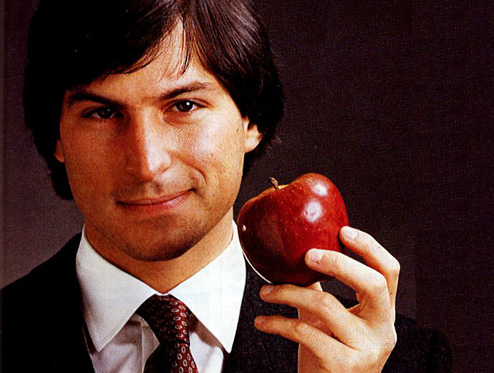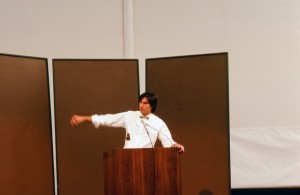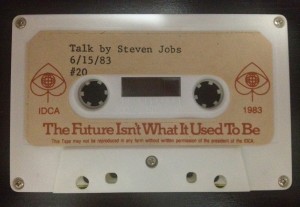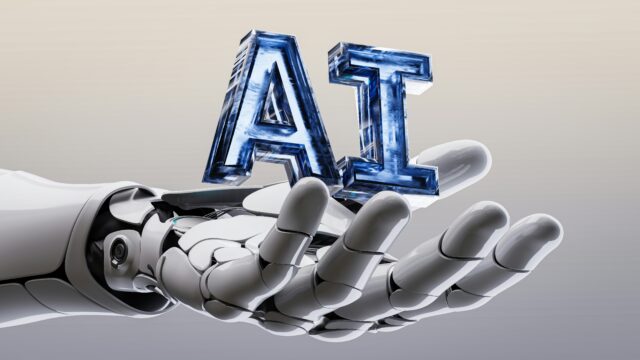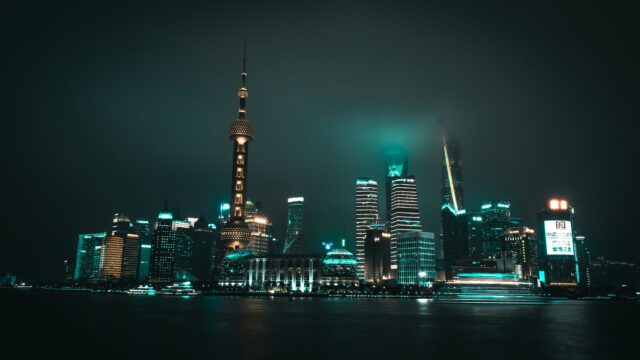In 1983, Steve Jobs gave a speech to a relatively small audience at a somewhat obscure event called the International Design Conference in Aspen (IDCA). The theme of that year’s conference was “The Future Isn’t What It Used To Be”, which looking back seems all too fitting. Circumstances being what they are, very little is available on the Internet regarding this Steve Jobs speech. In my extensive research, I could find only one recording of this talk, which itself was just posted in June of this year. This talk received a fair amount of attention at the end of August, after it was mentioned in a Smithsonian Magazine article written by Walter Issacson, Jobs’ biographer. However, the recording currently available is not complete. It ends after about 20 minutes, which corresponds with the end of Jobs’ prepared speech. Left out is almost 40 minutes of a follow-up question and answer session where Jobs offered incredible insight into his vision of future technology. I now present this recording to the world so that it may be preserved indefinitely.
First, I’d like to thank one of my oldest clients, John Celuch of Inland Design. He personally attended this speech almost 30 years ago and was the one who gave me the recording I now share. Attendees of the speech received a cassette tape copy and he held on to it all these years. He found the tape sometime last year and thought I might like it. He was absolutely right, but because I was in the middle of a move (and also due to a lack cassette tape players available to me!) I set the tape aside and put off listening to it until this summer. Had I known what was in this recording, I would not have waited so long! Incidentally, John met Steve Jobs at this conference. During their interaction Steve Jobs gave him something to put in a time capsule that was buried at the conference. To our knowledge this time capsule has yet to be dug up. I’ll share more on this in a future article.
Here is the cassette tape I digitized this recording from. I’m not sure what the #20 means.
After listening to the recording, I did some research in an attempt to find some pictures of this speech. I only found one source of pictures, courtesy of Arthur Boden via his son Ivan’s Flicker account. Arthur had also personally attended this speech and took some pictures of Steve Jobs giving his talk. His son uncovered them while scanning some old slides and made them available on his Flicker account. To my knowledge, these may be the only known pictures of this speech. If anyone has any other pictures of this talk or any other Steve Jobs sightings at the conference, I’d love to know.
Regarding the speech, it is amazing to hear Steve Jobs talk about some things that were not fully realized until only a handful of years ago. This talks shows us just how incredibly ahead of his time he was. I’ve listened to the entirety of the recording a few times now and have taken extensive notes, of which I will further elaborate on in future blog postings. But for now, here are a few of the highlights – and remember – he is speaking in 1983. To put that in context, the Macintosh had not yet been introduced, Apple still thought the Lisa was going to be a hit, and the IBM PC was the second most popular personal computer behind the Apple II series.
- He mentions that computers are so fast they are like magic. I don’t think it is a coincidence that he called the iPad “magical”.
- He states that in a few years people will be spending more time interacting with personal computers than with cars. It seems so obvious now, but hardly a given back then.
- He equates society’s level of technology familiarity to being on a “first date” with personal computers. He recognized that technology would continue to evolve in the near future as would people’s comfort level with it. In hindsight, once it became dominant the PC industry stood relatively still while Jobs was busy planning “the next big thing”.
- He confidently talks about the personal computer being a new medium of communication. Again, this is before networking was commonplace or there was any inkling of the Internet going mainstream. Yet he specifically talks about early e-mail systems and how it is re-shaping communication. He matter-of-factly states that when we have portable computers with radio links, people could be walking around anywhere and pick up their e-mail. Again, this is 1983, at least 20 years before the era of mobile computing.
- He mentions an experiment done by MIT that sounds very much like a Google Street View application.
- He discusses early networking and the mess of different protocols that existed at the time. He predicts that we were about 5 years away from “solving” networking in the office and 10-15 years from solving networking in the home. I’d say he was pretty much dead-on.
- He says Apple’s strategy is to “put an incredibly great computer in a book that you can carry around with you that you can learn how to use in 20 minutes”. Does that sound like anything we are familiar with today? And they wanted to do it with a “radio link” so that people wouldn’t need to hook it up to anything to communicate with “larger databases” and other computers. Hmmm ….
- He compares the nascent software development industry to the record industry. He says that most people didn’t necessarily know what computer they wanted to buy. In contrast, when walking into a record store they definitely knew what music they liked. This was because they got free samples of songs by listening to the radio. He thought that the software industry needed something like a radio station so that people could sample software before they buy it. He believed that software distribution through traditional brick-and-mortar was archaic since software is digital and can be transferred electronically through phone lines. He foresees paying for software in an automated fashion over the phone lines with credit cards. I don’t know about you, but I think this sounds incredibly similar to the concept of the Apple App Store. Plus his comparison to the music industry just might be foreshadowing the iTunes store. You need to listen to the speech to hear the entirety of this passage for yourself.
- Right at the end of the Q&A session, a question is asked about voice recognition, which he believed was the better part of a decade away from reality. Given the context of Siri today, it is interesting to hear him talk about the difficultly of recognizing language vs voice because language is contextually driven. He says, “This stuff is hard”.
So finally, here is my digitized recording of a “Talk by Steven Jobs” from the 1983 IDCA. The previously unavailable Q&A session starts at about 21:30 of the recording. Note that most of the questions asked by the audience are unintelligible, but can generally be divined by the responses Steve Jobs gives. I digitized the recording using Audacity and applied a simple noise filter to remove the tape hiss and saved it as MPEG-4 (M4A). And finally special thanks to SoundCloud.com for agreeing to host the download. Enjoy!



